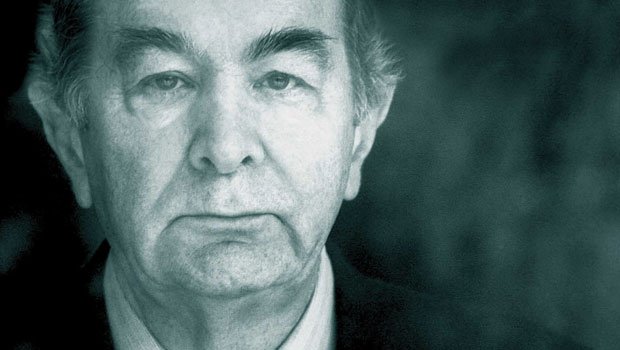Already published on Social News • A journal of social information
During the transition phase from the infancy to the adolescence there should be a substantial abandoning of the narcissistic and autoerotic investment of the first existence phase to achieve the investment object of the adult (a truly rare enterprise). Starting from a self-centred sexuality and from a psychism oriented in a totally egoistic manner, passing from the renunciation to the sexual infantile polymorphism and to the unconscious phantasies connected to it, in the normal psychosexual development, there should be a progressive acquirement of the recognition of one’s own body and of its limits together with the recognition of the complementariness of the sexes, therefore a redimensioning of the omnipotence infantile vicissitudes: understanding that, to eternalize ourselves, we need an object which does not fall under our control.
From here onwards we will be obliged to negotiate the satisfaction of our libidinal desire with the world. The profound modifications, which occur during adolescence, implicate a change of the perceptive processes and of the search for the object: from an object chosen according to narcissistic gratifications one should pass to the perception of an object different to oneself that is recognized as uncontrollable in an omnipotent way (in reality people who reach a complete perception of the other person as a persona can truly be counted on one hand). Nicola Peluffo reminds us that during this tumultuous period of transformations, “representational and affective sets, charged with narcissistic sexuality and aggressiveness which structure themselves in a permanent manner and regulate, in a regressive way, the adult’s life” can be constituted in a future adult’s psychism.1
These sets that Peluffo denominates “primal characters” and who often fill the adults’ dreams, by means of an oneiric activity not sufficiently metabolized, dictate the waking behaviour: in other terms they constitute a kind of aberrant software which under the pressure of stressful situations or by effect of the well known compulsion to repeat, can “infect” people’s existential vicissitudes, pushing them towards a behaviour that to outside onlookers can be totally incomprehensible. Now then, what is there more incomprehensible than the behaviour of young anorexics who arrive to the point of playing havoc with their own bodies risking death or serious invalidities? The thing that strikes us the most in the first clinical observation is the un-affective emotional detachment with which they treat their own situation. In fact one of the characteristics that makes anorexia and psychosis similar is the lack of awareness of the illness. The young anorexics are modern vestals of a Secret Religion, who act out, on the altar of their body, restoring rituals of unconfessable Sins! If we should describe the things that strike us the most in the behaviour of these patients these are:
– The alteration of the perception of one’s own body.
– The conduct of expiation.
– The depressive habit and the aspect of a “fallen angel” which in reality, behind the involucre of remission and peacefulness, a wild aggressiveness is hidden (which is the one that attacks and mines the psychosomatic integrity of the subject)

All of this, as Daniela Marenco reminds us, is complicated by deeply regressive modalities of the object relations, in other words by a return to modalities of a more primitive rapport, characteristics of the first years of life. “The phantasies and imagoes relative to the unconscious relational dynamics, individualize in the body the site of the conflict instead of following the path of psychic elaboration (for instance through the dream): the body is, therefore, the privileged object both of the aggressive attacks and of the narcissistic investments “. 2
Furthermore the activation of a privileged Imago for hyper investment is created within the minds of these people: the image of the fusional mother, an omnipotent and persecutory imago which provokes a powerful desire of fusion activating, at the same time, a deep anxiety of dissolving oneself within the other and of a reabsorbing-annihilation.
It is an omnipotent experience of the breastfed thanks to which the baby does not perceive the object (the mother) separated from the Self, moreover the baby perceives itself as an entireness with the mother in a kind of symbiotic structure: the distinction between itself and the other is very weak and the baby perceives the mother as a prolongation of itself, as if she were a limb or an organ.
Recent epidemiologic research made by Italian scientists shows a major impact of the anorexia nervosa in subjects who have manifested foetal sufferance: “Results Several complications, such as maternal anemia (P = .03), diabetes mellitus (P = .04), preeclampsia (P = .02), placental infarction (P = .001), neonatal cardiac problems (P = .007), and hyporeactivity (P = .03), were significant independent predictors of the development of anorexia nervosa. The risk of developing anorexia nervosa increased with the total number of obstetric complications”. 3
In one of my recent works I have shown how the micropsychoanalitic hypothesis about the existence of the so-called intrauterine war, in other words of a psychobiological foetal-maternal conflict, has been substantially demonstrated by evolutionistic biology studies. 4
In the structuring of anorexia nervosa, it would seem that the former maternal-foetal conflict, which began during the intrauterine vicissitude, imprints all the subsequent phases of libido organization finding the definitive structuring in the oral phase: the conflict will later shift itself from the foetal interaction with the maternal object, to the interaction with its own body which has become the phantasmic substitute of the maternal-foetal involucre.
The phantasy of the fusional mother must be kept at bay and controlled; therefore, every representation even indirect, which refers to it, must be checked, blocked and at the worst denied.
In the mental anorexia these representations prevalently regard the body and food. In the minds of these girls the alimentary function becomes eroticized. For these subjects, eating means unconsciously carnally uniting oneself to an incestuous object: from here there is a necessity to diminish the alimentary amount or at least to ritualize it into complicated sacrificial rituals.
Furthermore the substantial destruction which they cause to their own bodies and their own beauty also has the aim of making themselves sexually less attractive, finding relief and shelter against the sexual requests that come from the Id. The frequent and systematic self-observation in the mirror (which on a conscious level is targeted towards controlling their own curves) unconsciously has the characteristics of a sexual, self-erotic and voyeuristic function to which they have returned by regression.
The body, as Daniela Marenco reminds us again, sometimes becomes a persecutor to be controlled. Often, in the most favoured cases, only part of the body becomes the binding fulcrum of this fight: the conflict is then circumscribed, an anorexic syndrome is not structured and the body seems to be apparently accepted, even though it is perceived as
disfigured by that “horrible” part which is experienced as the source-aim of a disturbance which is difficult to classify.
“The ever major request of plastic surgery by young and very young people makes the diffusion of this phenomenon more evident… The binding of the conflict onto a part of the body is a defence mechanism. Often, removing the “persecutor” or better still, surgically extirpating the part of the body that incarnates the image of the persecutor, unhinges the defences, the persecutory anxieties no longer bound, overflow, with severe risk to the psychic health”. 5
Anorexia nervosa is, unfortunately, a very difficult test bed for the psychotherapist: it is in every way a borderline syndrome, in other words, a form between the psychosis (the rupture of the reality principle, the absence of the consciousness of the illness) and the neurosis. Since the young anorexic is substantially phantasmatically closed in her maternal-foetal involucre, above all, the contact and the opening phases are a difficult task, which requires experience, neutrality and patient waiting by the therapist: every attempt to force the situation, will be lived by the patient as a repetition of an englobing threat which endangers her untouchable Uniqueness. Not only: as Gioia Marzi acutely puts into evidence: “In the clinical practice I have encountered how, in the lives of these girls, we often run into failed attempts of displacement into the secondary process, in other words, of forming relationships of the following type: very strong ties, characterized by an intense fusion and a strong idealization of the object. Aborted at the moment in which the object differentiates itself manifesting other interests… This transference can also realize itself towards the therapist, giving place to those difficult situations of transference neurosis”. 6
Written by: Quirino Zangrilli © Copyright
Translated by Linda De Nardo
Note:
1 Nicola Peluffo, Le trasformazioni della sessualità: dall’infanzia all’adolescenza, in “Corpo, cibo e adolescenza, a cura di Liliana Bal Filoramo, Celid, Torino, 2006.
2 Daniela Marenco, L’anoressia mentale nell’adolescenza, Scienza e psicoanalisi, Novembre 2000.
3 Angela Favaro; Elena Tenconi; Paolo Santonastaso, Perinatal Factors and the Risk of Developing Anorexia Nervosa and Bulimia Nervosa, Arch Gen Psychiatry, Jan 2006; 63: 82 – 88.
4 Quirino Zangrilli, La guerra uterina. Le ipotesi della micropsicoanalisi trovano conferma nella biologia evoluzionista, Scienza e psicoanalisi, Gennaio 2007.
5 Daniela Marenco, Cambiamenti del corpo ed immagine corporea, Scienza e psicoanalisi, Aprile 2006.
6 Gioia Marzi, La dimensione di ascolto in spdc e in psichiatria di consulenza in caso di disturbo del comportamento alimentare, dal Congresso “I Disturbi della Condotta Alimentare dal SPDC alle dimissioni: banco di prova per l’integrazione dei servizi”, Frosinone, 2006
Nel 2024 riceve il Premio Accademico d’Onore della Accademia Culturale Internazionale Cartagine 2.0.
Doctor Quirino Zangrilli was born in Fiuggi in 1955. Graduated with honours in Medicine and Surgery in 1980, he practices Psychoanalysis, with intensive method, since 1982. He is author of 72 scientific pubblications. He has attended as speaker or president of session to many national and international scientific Conventions. His book “La vita:involucro vuoto” (Life: empty involucre), published by Borla in 1993, has been in use by the Chair of Dynamic Psychology at Turin’s University since 1994. He is the author and founder of the multimedia review “Psicoanalisi e Scienza” (Psychoanalysis and Science), the most read Italian on line review of psychoanalysis. In 2012 he participated as a Speaker at the Scientific Festival of BergamoScienza. In 2013 he illustrated his research on the maternal-fetal interaction in the Special Session of the XI World Congress of Perinatal Medicine in Moscow with his relation “Intrauterine Imprinting”. He is visiting teacher at Moscow Institute of psychoanalysis and training psychoanalist of Swiss Institute of Micropsychoanalysis.
In 2024 he received the Honorary Academic Award of the Carthage 2.0 International Cultural Academy
Le Le Docteur Quirino Zangrilli est né à Fiuggi en 1955. Diplômé avec mention en Médecine et Chirurgie en 1980, il pratique la psychanalyse depuis 1982, en utilisant une technique intensive. Il est l’auteur de 72 livres et publications scientifiques. Il a participé en tant que conférencier ou président de session à de nombreuses conférences scientifiques nationales et internationales. Son livre “La vie : enveloppe vide”, publié par Borla en 1993, est adopté depuis 1994 par la Chaire de Psychologie Dynamique de l’Université de Turin. En 1994, il a reçu le “Prix national Ciociaria de médecine”. Il a conçu et fondé le magazine multimédia “Psicoanalisi e Scienza”, qui est le magazine de psychanalyse en ligne en italien le plus suivi au monde. (Source : Entireweb, Alexa, Google, Virgilio, Arianna., etc.). En 2012, il a participé en tant que conférencier à la colloque scientifique de BergamoScienza. En 2013, il a exposé ses études sur l’interaction materno-fœtale lors de la session spéciale du XIe Congrès mondial de médecine périnatale à Moscou avec le rapport “Intrauterine Imprinting”. Il est chargé d’enseignement au cours de spécialisation de trois ans en psychanalyse, psychothérapie psychanalytique et consultation psychanalytique à l’Université de Moscou. Il est membre didacticien de l’Institut Suisse de Micropsychanalyse et de la Commission pour la Pratique de celui-ci.
En 2024, il reçoit le Prix Académique Honoraire de l’Académie Culturelle Internationale Carthage 2.0.
В 2024 был награжден Почетной академической премией Академии Международной Культуры «Карфаген 2.0».













